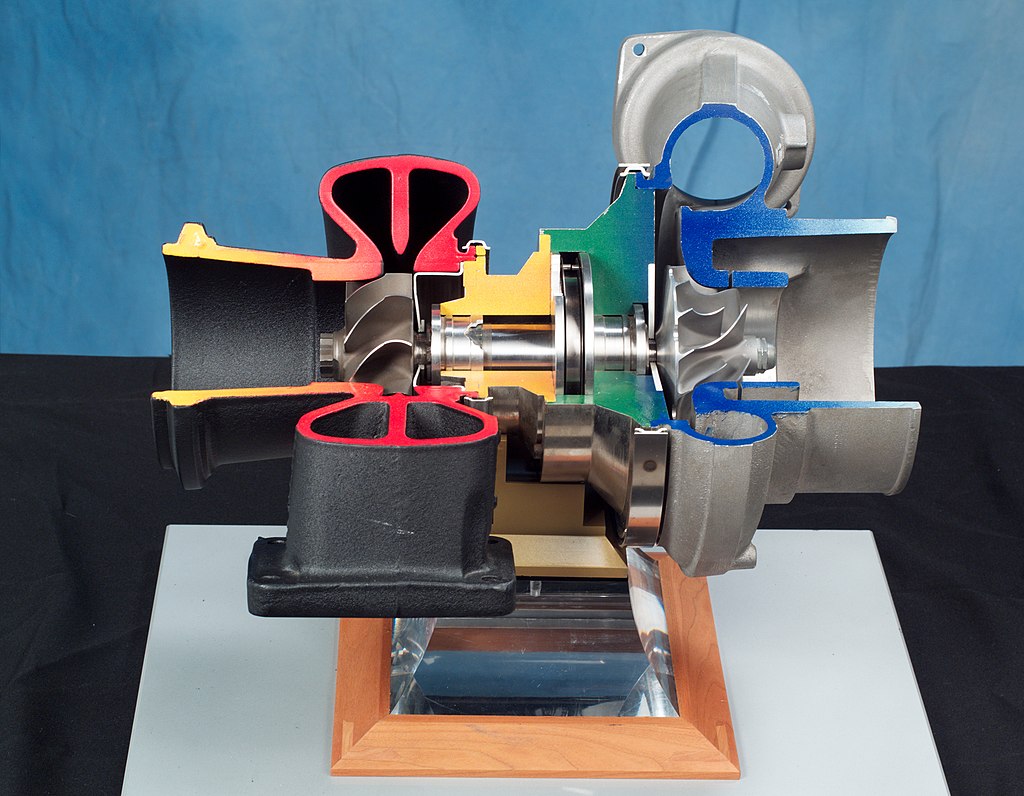Turbocharger in Aircraft: Enhancing Engine Performance
Aircraft engines operate at high altitudes, where the air is thin and the oxygen concentration is low. This results in reduced engine power, which can impact the aircraft's performance. To overcome this, aircraft engines are equipped with turbochargers, which increase the air intake pressure and thus enhance the engine's performance. In this blog post, we will discuss turbochargers, their benefits, and how they affect the performance parameters of an aircraft.
What is a Turbocharger?
A turbocharger is a device that is used to increase the air intake pressure of an engine. It works by using exhaust gases to spin a turbine, which in turn drives a compressor that forces air into the engine's intake. The increased air pressure allows for more fuel to be injected into the engine, resulting in increased power output. Turbochargers are commonly used in aircraft engines, as they provide a simple and effective way to increase engine power at high altitudes.
Benefits of Turbochargers
The use of turbochargers offers several benefits for aircraft engines, including:
1. Increased Power: Turbochargers increase the amount of air and fuel that can be burned in the engine, resulting in increased power output.
2. Improved Efficiency: By increasing the power output, turbochargers can improve the overall efficiency of the engine, allowing it to produce more power with less fuel.
3. Increased Altitude Capability: Turbochargers allow aircraft engines to maintain their power output at high altitudes, where the air is thin and the oxygen concentration is low.
4. Reduced Weight: Turbochargers are generally lighter than superchargers, which are another type of forced induction system. This can help to reduce the overall weight of the aircraft and improve its performance.
 |
| Turbocharger in Aircraft: Enhancing Engine Performance |
How Turbochargers Affect Performance Parameters of an Aircraft
1. Thrust: Turbochargers increase the amount of air that is available for combustion, resulting in increased thrust. This allows the aircraft to achieve higher speeds and climb more quickly.
2. Altitude: Turbochargers allow the engine to maintain its power output at high altitudes, where the air is thin and the oxygen concentration is low. This allows the aircraft to fly at higher altitudes, where the air is less dense and the fuel consumption is lower.
3. Fuel Efficiency: Turbochargers improve the overall efficiency of the engine by increasing its power output. This allows the aircraft to produce more power with less fuel, resulting in improved fuel efficiency.
4. Range: By improving the fuel efficiency, turbochargers can increase the range of the aircraft, allowing it to fly further on a single tank of fuel.
5. Payload: Turbochargers can increase the amount of payload that the aircraft can carry, as they increase the power output of the engine.
Examples of Turbocharged Aircraft Engines
1. Pratt & Whitney JT9D: The JT9D is a turbofan engine that is used in several commercial aircraft, including the Boeing 747 and the McDonnell Douglas MD-11. The engine uses a single-stage high-pressure compressor and a three-stage low-pressure compressor to increase the air intake pressure.
2. General Electric F414: The F414 is a turbofan engine that is used in the F/A-18 Super Hornet fighter jet. The engine uses a two-stage fan and a six-stage compressor to increase the air intake pressure.
3. Rolls-Royce AE 2100: The AE 2100 is a turboprop engine that is used in several military transport aircraft, including the Lockheed Martin C-130J Super Hercules. The engine uses a single-stage centrifugal compressor and a three-stage axial compressor to increase the air intake pressure.

